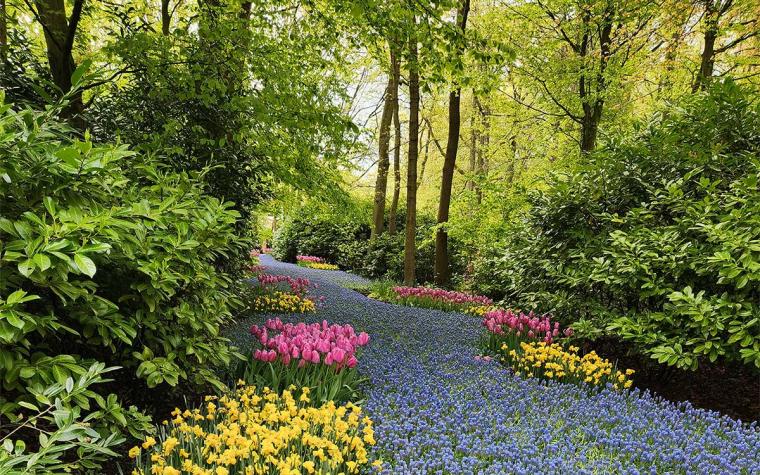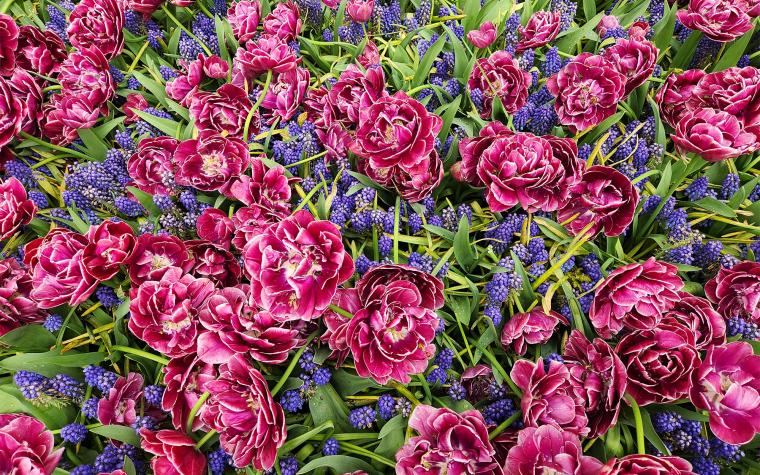STE. GENEVIEVE, Mo. – Few things thaw feelings of winter’s cold more than spring flowering bulbs, says University of Missouri Extension field horticulturist Katie Kammler.
Spring bulbs are Nature’s way of rewarding gardeners for their work in fall, providing early color and blooms before most annuals and perennials.
While spring is their time to shine, bulbs need cool weather to flower. They require a chilling period after being planted in the fall to bloom in spring.
Some popular spring flowering bulbs include daffodils, crocus, snowdrops, tulips, Dutch iris and hyacinths.
Spring flowering bulbs grow and give a lot of color for little effort, says Kammler. They thrive in most soils with good drainage. They need sunlight to bloom year after year. But since most of their growth is completed before trees leaf out, they can be planted under deciduous trees.
They are suitable for shrub borders, perennial beds and groundcovers. Plant individual varieties in groups of 3-12 bulbs for a mass showing. Space bulbs 6-12 inches apart and 6 inches deep. This spacing allows room for the bulb to divide and spread.
Kammler says mulching helps to keep the soil temperature uniform, reduces weed problems and prevents soil from splashing onto the flowers. Like many garden plants, they need adequate moisture to flower. If there is not enough rainfall, water bulbs well after planting and continue if needed so bulbs can develop good root systems.
After establishment, little care is needed. Fertilize lightly each spring with garden or bulb fertilizer.
After flowering, do not cut or tie off leaves in a bundle. Leaves manufacture food that is stored in the bulb to produce next year’s flowers.
Let foliage remain for eight weeks after blooming. Then, remove foliage by hand. Using a knife or scissors can spread virus diseases, says Kammler. Mix spring bulbs with other plants such as daylilies or ferns to hide the spent foliage but still allow it to produce food for the bulb.
Dig and divide bulbs every 5-10 years if bulbs are not planted too closely together. When flowering is reduced or flower size is smaller, it is usually time to divide bulbs, she says.
Dig bulbs when the foliage is dying and can still be seen so bulbs can be located. Dig with a fork spade to prevent bruising. Remove loose soil and spread out to dry, but not in direct hot sun.
After bulbs dry, the offsets may be removed from the mother bulb. Also remove old, dried skins and roots. Store in a cool, dry, well-ventilated area until planting time in fall.
Daffodils are showy and easy to care for, but gardeners may enjoy adding some minor bulbs for more blooms and interest.
Crocuses come in shades of yellow, purple and white and are among the first bulbs to bloom in late winter. They are low-growing and open in mass during the day, making a beautiful display, says Kammler.
Another spring favorite is glory-of-the-snow. Its small blue flowers have pale blue to white centers. They naturalize well and make a great mass display.
Snowdrops are another minor bulb that can bloom though snow. They have white drooping flowers with green crescents at the tip. They also naturalize.
Grape hyacinths look like clusters of tiny grapes on a stem. “These childhood favorites of mine naturalize and look awesome in combination with other bulbs,” says Kammler.
Netted or Dutch iris comes in many colors. This dwarf iris grows under a foot tall and forms true bulbs.
Photos
Grape hyacinth and tulips
Choose flowering bulbs in a variety of contrasting colors and sizes to add interest to your landscape. Photo by Katie Kammler.
Grape hyacinth river
Careful planning of flower bulbs can provide colorful aesthetics. Spring flowering bulbs provide years of enjoyment. Photo by Katie Kammler.

